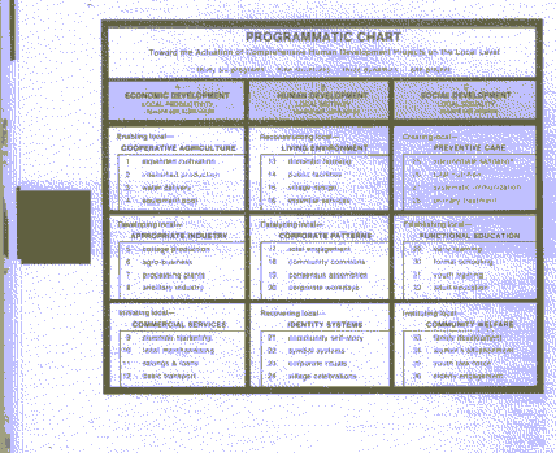
Project
Acceleration
In 1978 the 24 pilot projects entered an acceleration phase to intensify leadership development and undergird social and economic programs. Residents formed programrelated task forces. Teams of volunteer consultants worked with the task forces to facilitate training and Implementation. The following highlights from nine projects are presented through the categories of the Programmatic Chart below. This chart is a summary picture of all 24 projects' programs. Rather than a prescription for any single community, it is a general guide for comprehensive local development.
PROJECT ACCELERATION
During the past year, residents of project communities worked in two types of task forces to accelerate development progress. Each community was divided geographically into stakes or neighborhoods. The leaders of each stake met weekly to plan program implementation in their residential section and ensure adequate care for every person. Residents also formed program task forces or guilds. Community guilds were established in agriculture, industry, commerce, health, education and community wellbeing. Guilds worked daily to intensify implementation in each program area. The community's energy was regularly focused in workdays to finish needed tasks in a short time. Residents also devised special campaigns and events to complete particular tasks.
Teams of volunteer consultants traveled to each project to work with the local guilds on a shortterm basis. Business people provided technical assistance in market feasibility research, product design, management systems, bookkeeping and capitalization. Medical professionals organized health fairs, held innoculation campaigns, established local health or dental centers, offered training in nutrition and preventive care and assisted residents in establishing continuing relations with existing health services in the area. Further support was provided through publication of various social and economic program handbooks. These manuals were developed from field experience for adaptation and use by local residents. The highlights which follow typify progress in all the Human Development Projects.

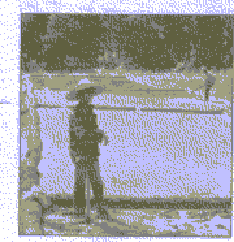
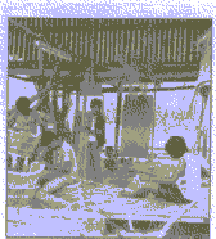
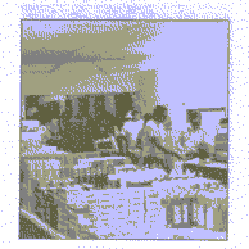

Before its consultation,Sungai Lui, 21 ml/es from Kuala Lumpur, Malaysia, existed on a subsistence agricultural economy. Rice and rubber plots averaged only four acres. Farming was done by hand. Land remained uncultivated because youth and adults found more profitable work in the city.
In 1978 a group of farmers reclaimed 105 acres of padi land. They worked in teams using mechanized equipment and herbicides to clear jungle growth. Their experiment with cash crops produced a good maize yield and new fruit orchards. Villagers planted 100 family gardens. Two commercial fish ponds and a modern chicken farm were established. An agricultural complex was built providing repair services, farm supplies and storage space for the new communityowned tractor and power tillers. A cooperative market was also established.
This year the gross village income grew 27%. Increased growth is expected in 1979 as residents expand rice and fruit production, introduce insecticides and develop animal husbandry. Residents of Sungai Lui are working hard to regain village self-sufficiency.
Appropriate Industry
Sudtonggan is an isolated village in a field of limestone boulders on Mactan Island in the central Philippines. Its residents, craftsmen and fishermen for generations, have worked together since 1976 to develop appropriate light industry.
Sudtonggan has established four industries by combining the skills of its people with its natural resources. Rope manufacturing, traditionally done by individual family units, became a productive community based industry. It expanded this year into an abaca craft industry with an export outlet. Rock cutters organized a cooperative quarry venture, adopted improved cutting tools and doubled production. Two new burl furniture factories employ 40 youth. Onthejob managerial training equipped local entrepreneurs to meet delivery deadlines, maintain quality control and keep financial records. Employees regularly contribute to a community industrial development fund.
Village income doubled in less than three years. Jobs for 120 people were created and 110 residents are engaged in cottage industry training. In 1978, village income grew by an additional US$50,000 through its new industries.
Commercial Services
The people of Inyan Wakagapi, on the Standing Rock Sioux Indian Reservation in North Dakota, realized that income quickly drained from the community due to a lack of commercial services. A gas station and a small confectionery were the only business enterprises. Residents traveled over20 miles to shop.
In the project's first year, residents established an economic development corporation with a 15-member board elected by the community. They opened a commercial center with a grocery store, a laundromat and cafe. Ten residents were trained in retail management. The store introduced a check cashing facility and a service whereby local savings were collected and deposited in the nearest bank 50 miles away.
In 1978 the community store was enlarged to 2,000
square feet. Super Valu, a regional buying affiliate, serviced
the store and provided needed professional guidance. Sales increased
50%. Now the store also markets produce
from the 12acre community truck farm. Through these measures
income now turns over within the community providing new jobs
and services for its residents.
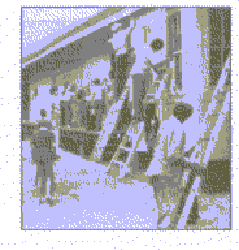
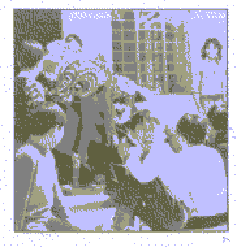
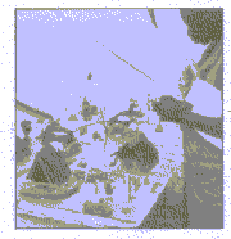

In the spring of 1978 Gibson, North Carolina was a community with many unoccupied buildings, unsightly vacant lots and mounds of dirt and litter. In a community workday at the end of their consultation, residents transformed three downtown lots into beautiful streetside gardens. Their determination prompted three residents to donate land for the New Horizons Park, now a playground and picnic area. Over 3, 000 hours of labor were donated to this effort.
While dismantling a dilapidated building and clearing a cluttered lot facing theold town depot, Gibson citizens decided to reclaim the depot itself. They scraped, repainted and decorated, turning the building into a fine community center. The grand opening of the Gibson Station Community Center in December confirmed the town's new image as "Crossroads of the Carolinas."
The Town Council designated April, 1979, as Beautification Month. Extensive landscaping, an entrance sign displaying the community symbol and slogan and a new restaurant will intensify the rehabilitation effort. Gibson is presenting a brand new face-marked by renewed pride on the part of its citizens.
Corporate Patterns
Nam Wai, in the New Territories of Hong Kong, faced the challenge of shifting from a rural to an urban economy without losing its Hakka tradition as a community. Historic cohesiveness rooted in agriculture had been lost. High land values encouraged sales to speculators and further fragmented the village. Local leaders recognized that a cooperative approach to land development was needed.
In 1978 the Nam Wai Foundation, Ltd. was incorporated. Nine directors were elected from every neighborhood and are accountable to the quarterly Village Assembly. Every resident over 21 is eligible for membership. Profits are used for programs beneficial to the whole village.
Volunteer consultants in law, architecture, engineering and investment worked continuously with the Foundation to plan, capitalize and implement a scheme of land development. The effort involves land in the village and 16 acres leading to the coast Development for tourism, agriculture, industry and housing is now in process. Forty percent profits are projected. Nam Wai decided to deal with its future through a corporate structure. Now the whole village will benefit.
Identity Systems
For decades the residents of the three Zambian villages now comprising the Kapinl Human Development Project experienced fragmentation of family, religious and tribal life. In outlying farmlands flooding forced members to relocate in neighboring villages. Today the population represents many tribes and religions. Residents decided to turn this diversity into a unity. First, they integrated the community by constructing a bridge to provide all three villages with access to the main road. The tribal headmen named the entire area Kapini, after the central village.
Residents built a plaza and wrote an area history. They constructed an 18room training center, a preschool and community kitchen. They started a demonstration farm, an irrigation system and a brick factory. Each facility was marked with the Kapini insignia symbolizing a new resolve to work together. Villagers publish a weekly newsletter, The Call of Kapini, which further shapes the community's common identity. During a recent quarterly Community Assembly, residents feasted, sang Kapini songs and joined in traditional dances to celebrate their lives as one people with one future.
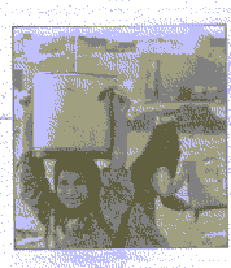
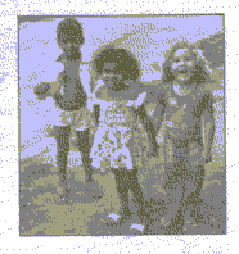
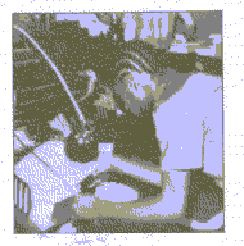

Preventive Care
Eighty percent of the villagers of Bayad, Egypt, were disabled by bilharzia, a disease contracted from parasites living in the Nile River, the village's only source of water. Bilharzia enters the body through skin contact, saps vitality and shortens the life span of its host.
El Bayad residents decided to tackle the problem. During community workdays, they drilled two fresh water wells and laid pipe to a central distribution point. With fresh water available, regular immunization campaigns largely eradicated bilharzia infection. The villagers then built a 90foot water tank and designed a plan for further water distribution points. They built the town's first laundry, showers and toilets. Now sanitation facilities are being constructed in each neighborhood. Health caretakers were trained to lead education campaigns in health and nutrition. Each day the new community kitchen serves 150 nutritious meals to children, pregnant women and elders.
The people of El Bayed are caring for a precious commodity-their own health. The water tank bears the sign, "Water is the sign of life in the desert. Water is the hope of Bayed. "
Functional Education
In the Brazilian village of Bananciras, limited formal education opportunities perpetuated illiteracy and a general lack of twentieth century skills. Just after the project began, 60% of the young children were enrolled in the new Early Learning Center. Village women were trained as curriculum designers and teachers. One family donated the school facility and students' parents made uniforms. The first graduation in December was a proud moment for Bananeiras.
Local artists and sportsmen established a cultural and athletic program to supplement the elementary school's academic curriculum. At the same time residents implemented plans to extend the elementary school beyond grade five. An adult literacy c/ass meets four times a week. Training in leadership methods continues weekly.
Education in nutrition became a part of the home gardens program and training in agricultural techniques began on the demonstration farm plots. Women were trained in skills to launch a sewing industry and commercial bakery. The phrase "fresh baked bread by Christmas" captured the village's intention of gaining selfreliance through functional education.
Community Welfare
Ivy City in Washington, D. C., was abandoned by industry and marked by deteriorating buildings. Transiency and youth delinquency weakened traditional neighborhood ties. During the project's first year, residents formed six citizens' groups to implement programs ranging from industrial development to recreational activities.
The Neighborhood Youth Corps provided most of the labor for turning a dilapidated school into a community center, now operated entirely by Ivy City citizens. It sponsored 50 young men and women in the Mayor's Summer Work Program and obtained a grounds cleaning contract for winter jobs. Participating youth contributed part of their salaries to finance community projects.
The Women's Guild sponsored summer fairs and barbeque dinners to raise funds for local cultural events. A Young Women's Club was formed which participates in community workdays and provides leadership for children's programs.
During the winter the elders enjoyed a 'hot meals'
'program and a shoppers' transportation service. Ivy City citizens
are enthusiastically rebuilding structures which care for the
wellbeing of all ages.